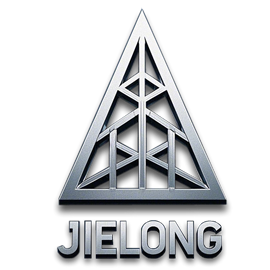PRODUCTS
Products
Message
‹

›
‹
›
Andamios Insdutrial
Industrial scaffolding is an indispensable asset across a wide spectrum of industrial scenarios. Its applications span numerous sectors, playing a crucial role in the successful execution of projects.
+8613821480207
wlb57958340@gmail.com
CONTACT US
Products Detail
Message
Products Recommended

Industrial scaffolding is an indispensable asset across a wide spectrum of industrial scenarios. Its applications span numerous sectors, playing a crucial role in the successful execution of projects.
In the realm of factory building construction, industrial scaffolding provides the necessary framework for workers to construct multi - story factory structures. These buildings often house heavy machinery and require precise construction. Scaffolding enables workers to reach all areas of the building during construction, from the foundation to the highest levels, ensuring that every component is installed accurately.
The construction of petrochemical facilities is another area where industrial scaffolding is widely used. Petrochemical plants are complex and large - scale structures. Scaffolding allows workers to access the various components of these facilities, such as storage tanks, pipelines, and processing units. It provides a stable platform for tasks like welding, painting, and installation of equipment, all of which are essential for the proper functioning of petrochemical plants.
For power plant equipment installation and maintenance, industrial scaffolding is equally vital. Power plants house large - scale generators, turbines, and other critical equipment. Scaffolding gives maintenance and installation crews safe access to these components. During installation, workers can use the scaffolding to carefully position and secure heavy equipment. In maintenance operations, it enables technicians to inspect, repair, and replace parts of the equipment, ensuring the continuous and efficient operation of power plants.
In mining operation areas, industrial scaffolding is used to support construction and maintenance activities. Mines often have complex structures, including shafts, tunnels, and processing areas. Scaffolding provides a stable working platform for workers to carry out tasks such as building support structures, installing ventilation systems, and maintaining mining equipment.
One of the key advantages of industrial scaffolding is that it offers construction workers a high - pressure, safe, stable, and easy - to - operate elevation system. This is particularly important when working at heights. The stable design of industrial scaffolding ensures that workers can move around freely while performing their tasks, minimizing the risk of accidents. The easy - to - operate nature of the scaffolding means that workers can quickly adjust the height and configuration of the platform as needed, increasing productivity.
In essence, industrial scaffolding creates a safe and efficient high - altitude working environment. By providing a reliable means of access and support, it guarantees that industrial projects progress smoothly, on schedule, and with the highest standards of safety and quality.
FAQ
- What materials are commonly used in industrial scaffolding?
Industrial scaffolding is typically made from high - strength materials. Steel is a very common choice due to its excellent load - bearing capacity and durability. It can withstand the harsh conditions often found in industrial settings, such as high winds, heavy equipment vibrations, and extreme temperatures. Aluminum is also used, especially in situations where a lighter - weight option is required for easier mobility and handling. Some specialized industrial scaffolding may also incorporate composite materials for added strength and corrosion resistance. - How is the safety of industrial scaffolding ensured?
Safety in industrial scaffolding is ensured through multiple measures. First, it is designed and constructed according to strict safety standards. This includes proper bracing and anchoring to prevent collapses. Guardrails are installed around the working platforms to prevent falls, and toe - boards are added to stop objects from falling. Regular inspections are carried out to check for any signs of wear, damage, or instability. Workers are also provided with comprehensive safety training on how to use the scaffolding correctly, including how to climb, move around on the platform, and recognize potential hazards. - Can industrial scaffolding be customized for specific industrial projects?
Yes, industrial scaffolding can be highly customized. Manufacturers can design and fabricate scaffolding to meet the unique requirements of different industrial projects. For example, in a power plant where there are complex equipment layouts, the scaffolding can be tailored to fit around the existing machinery and structures. Special brackets, connectors, and platform sizes can be created to provide the most efficient and safe access for workers. In mining projects, the scaffolding can be adapted to the irregular shapes and sizes of tunnels and shafts. - How does industrial scaffolding contribute to the efficiency of industrial projects?
Industrial scaffolding significantly contributes to project efficiency. It provides quick and easy access to all areas of the construction or maintenance site, reducing the time workers spend on getting to their work locations. The stable working platform allows workers to perform tasks more quickly and accurately. For example, during equipment installation in a petrochemical plant, workers can use the scaffolding to position and secure components faster. The ability to adjust the scaffolding's height and configuration on - the - fly also means that different tasks at various heights can be carried out without significant delays. - What are the challenges in using industrial scaffolding in extreme industrial environments?
In extreme industrial environments, such as those in petrochemical plants with corrosive chemicals or mining areas with high humidity and dust, corrosion and degradation of the scaffolding materials can be a challenge. The harsh chemicals in petrochemical plants can eat away at the metal components of the scaffolding over time. In mining areas, the dust and moisture can cause rust and weaken the structure. Additionally, extreme temperatures, whether extremely hot or cold, can affect the performance of the scaffolding materials and the stability of the structure. However, with proper material selection, regular maintenance, and protective coatings, these challenges can be effectively managed.
Thank you for your interest in our products. "*" Indicates the Fields are Mandatory
Leave a Message
Thank you for your interest in our products. "*" Indicates the Fields are Mandatory
